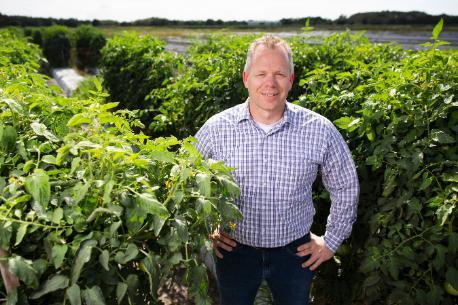By Clint Thompson
One University of Florida Institute of Food and Agricultural Sciences (UF/IFAS) researcher is using artificial intelligence (AI) to apply herbicides more efficiently. Nathan Boyd’s research will help growers to not make chemical applications where they are not needed.

Associate Professor of Horticultural Sciences at the GCREC
“We use artificial intelligence that we’ve trained to differentiate. You could train it to differentiate species. We’ve decided that’s not really necessary, because you use the same herbicide on many species. Instead, how our system is currently trained is to differentiate category,” Boyd said. “Category would be broad leaf, grass and nutsedge. We use three different herbicides on those. That’s our current approach.”
AI can identify the weeds and apply pre-mixed herbicides to target those pests. It is all done automatically while driving through the field. Boyd targets the pre-emergent herbicide in the holes themselves. A post-emergent application is needed as well to control nutsedge emergence through the plastic. Applications are needed in the row middles as well.
“It’s a real time spray, so the camera is 18 inches ahead of the nozzle; just to give you an idea of how fast it has to compute. It’s detecting, identifying and telling it to open and close as you’re driving, all at one time,” Boyd said.
UF/IFAS research focuses on tank mixes or a dual boom system, where one is a pre-emergent and one is a post-emergent. Boyd said multiple booms can be configured for different types of herbicides, though he has tried to simplify the process in keeping the growers’ needs in mind.
The more cameras that are being utilized, the more computer power is required and likelihood that something would mess up. The more spray nozzles that are functioning, the more they have to be kept clean.
So far, Boyd’s research has greatly reduced the amount of herbicide sprays being applied.
“If you sum it altogether, we reduced herbicide use by 75%. We can get closer to 80%, 85% reduction of herbicide use. That’s with no reduction in weed control. That’s a significant drop compared to what you would normally do,” Boyd said.
Additional research is needed so Boyd’s team can repeat and refine the process.









